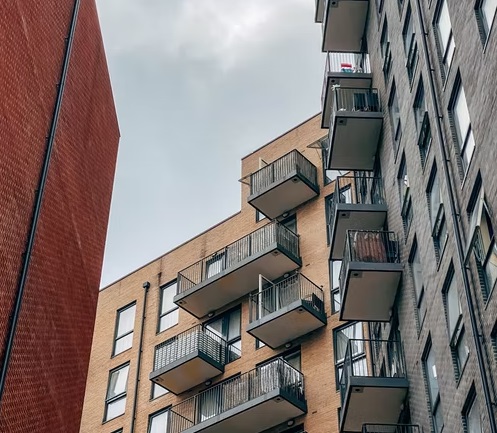Exclusive: Staggering £130bn worth of homes left empty in London alone with record 87,731 vacant properties

It has emerged that the value of vacant homes in London equates to over £130bn.
London has a total of 87,731 vacant homes, making it the top city in the UK for the prevalence of empty houses. With house prices averaging £1.49m in the capital, the cost of vacant homes is approximately £130.8bn.
A recent study by CIA Landlord Insurance, which looked at the UK housing crisis and the increasing number of empty homes, analysed the impact that inhabiting vacant homes could have.
The brownfield land availability in cities has also been analysed to reveal which cities would benefit the most from further development. This is in response to the high demand in properties within the UK as well as house prices being exacerbated due to the number of vacant homes in the UK.
According to the research, Bournemouth has the second costliest vacant homes in the UK at a combined £3 m, calculated from the number of empty homes (7,213) and the comparative average house price (£414,624).
| Rank | UK city | No. of vacant homes (2021) | Average house price (£) (2022) | Approximate cost of vacant homes (£) |
| 1 | London | 87,731 | 1,490,332 | 130,748,291,250 |
| 2 | Bournemouth | 7,213 | 414,624 | 2,990,686,158 |
| 3 | Manchester | 8,024 | 279,475 | 2,242,508,523 |
| 4 | Birmingham | 6,975 | 302,117 | 2,107,263,146 |
| 5 | Brighton & Hove | 3,388 | 492,002 | 1,666,902,200 |
| 6 | Bristol | 3,735 | 422,842 | 1,579,313,488 |
| 7 | Coventry | 4,399 | 348,685 | 1,533,863,863 |
| 8 | Leeds | 4,857 | 290,905 | 1,412,926,216 |
| 9 | Bradford | 6,056 | 229,782 | 1,391,558,217 |
| 10 | Reading | 2,595 | 445,967 | 1,157,284,365 |
Housing crisis
Liverpool is currently experiencing the worst housing crisis in the UK with a deficit of around 232,759 homes.
The city currently has 233,867 registered homes, however, our study found that over 450,000 are needed in order to combat the housing crisis there – leaving the city with a deficit of around 50 per cent.
Leicester has the 2nd worst housing crisis in the UK, with a deficit of around 135,201 homes needed for the number of people looking to move.
| Rank | City | Number of properties needed 2022 | Deficit of houses |
| 1 | Liverpool | 466,626 | -232,759 |
| 2 | Leicester | 274,815 | -135,201 |
| 3 | Bristol | 333,331 | -129,770 |
| 4 | Sheffield | 370,099 | -116,362 |
| 5 | Reading | 171,728 | -100,423 |
Cities with a surplus of homes include London, Leeds and Bournemouth who each have around 100,000 or more houses available.
The research found that over 86% of Glasgow’s housing deficit would be reduced if the vacant homes became inhabited, making it the city with the most to gain from solving their vacant homes issue.
Portsmouth could see its housing crisis decrease by over one fifth if vacant homes were sold to those wanting to actively live there.
The five cities that would benefit most from the selling of their vacant homes:
| Rank | City | % of deficit reduced by selling of vacant homes |
| 1 | Glasgow | 86.38 |
| 2 | Portsmouth | 20.53 |
| 3 | Coventry | 8.97 |
| 4 | Birmingham | 8.43 |
| 5 | Plymouth | 8.03 |
Brownfield Potential
Maximising brownfield housing potential in Coventry would have a profound impact on the city’s housing crisis reducing the deficit by nearly three quarters.
Plymouth, Nottingham and Portsmouth all have the potential to ease their housing crisis by at least 30% if they were to take advantage of their brownfield housing potential.
Top 5 cities with a housing deficit to benefit from brownfield maximisation:
| City | Housing crisis currently (2022) | Number of properties that could be built of brownfield land | Housing crisis if brownfield potential was maximised | Housing crisis difference when brownfield potential maximised (%) |
| Coventry | -49,062 | 36,000 | -13,062 | 73% |
| Plymouth | -19,730 | 7254 | -12,476 | 37% |
| Nottingham | -31,726 | 10,116 | -21,610 | 32% |
| Portsmouth | -13,611 | 4170 | -9,441 | 31% |
| Birmingham | -82,728 | 23,000 | -59,728 | 28% |